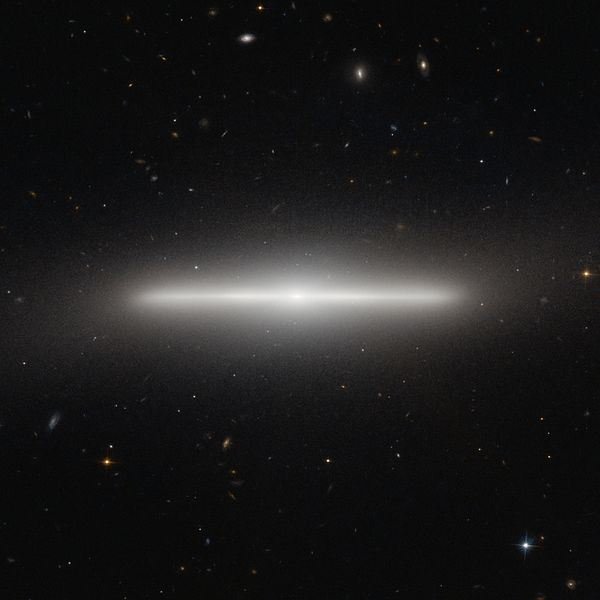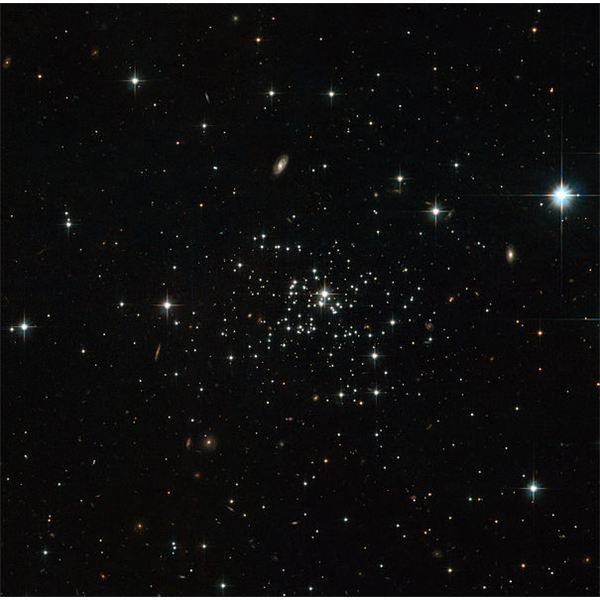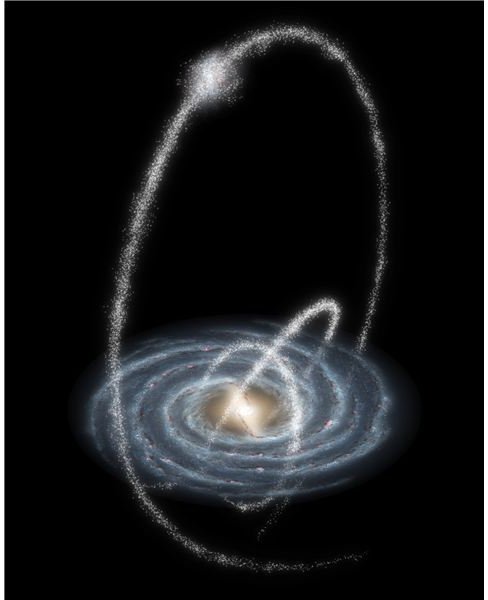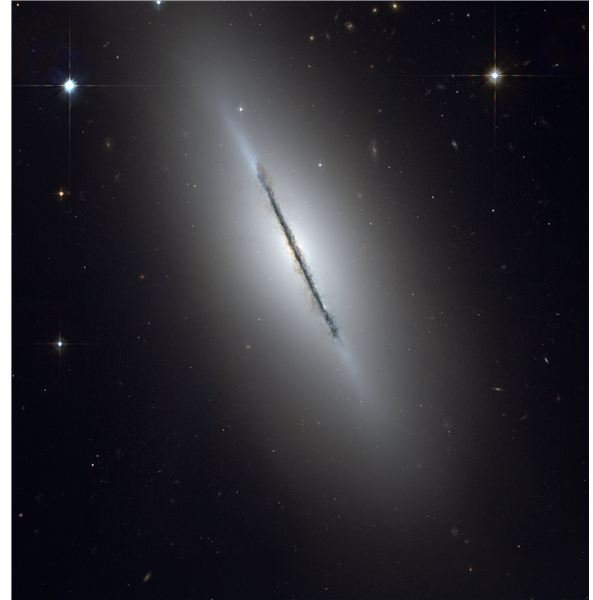Galactic Halos and Their Components - What Are They Made From?
A Brief Definition
A galactic halo is nothing more than a spherical distribution of matter surrounding a galaxy. For a spiral galaxy such as the Milky Way, the matter of this region may include very old stars (Population II), globular clusters, ionized gas and dark matter, and it is clearly separated from the main galactic disc. In the case of an elliptical galaxy however, there is no sharp transition between the disk of the galaxy and the halo. The following sections describe in greater detail what is in the Milky Way’s galactic halo and how it was formed.
Images: The left image depicts the NGC 4452 galaxy lying exactly edge-on as seen from Earth. It is 60 million light-years away and belongs to the Virgo Cluster that contains around 2000 galaxies. The bright nucleus, the very thin disc and the halo of the NGC 4452 are clearly visible. The right image shows the NGC 5866, a lenticular galaxy in the Draco constellation at a distance of 44 million light-years_._ A dust lane is quite distinctive in this case. Both pictures were created by images taken by Hubble’s Advanced Camera for Surveys.

Components of the Milky Way’s Halo
The main disc of our galaxy rotates at a speed of 500,000 mph and it is surrounded by the inner halo rotating at 50,000 mph in the same direction. The outer halo rotates in the opposite direction at about 100,000 mph. These regions mainly consist of (a) Population II stars and globular clusters, (b) ionized gas and (c) dark matter. More specifically:
a) The inner part of the halo is free of dust and mostly consists of individual Population II stars and globular clusters. Population II stars are older and with lower metallicity compared to the younger Population I stars that belong to the main galactic disc. Globular clusters, on the other hand, are spherical concentrations of very old stars found only in the halo of our galaxy. Since they contain no gas, it is not possible to create new stars within the globular clusters.
b) Another component of the Milky Way’s halo is the hot ionized gas that originates from supernova remnants being expelled through galactic chimneys. These are pipes or vents of hot gas that transport this matter away from the galactic disc. After the gas is cooled_,_ it is pulled back into the disc by gravitational forces.

c) The outer part occupies a larger region and mostly consists of dark matter. The presence of dark matter can only be detected through its gravitational effect on the motion of stars. For more information on its mysterious nature, click here.
Image: This is Palomar 1, a young globular cluster only 6.3 to 8 billion years old. Several galaxies can be seen at the background. The picture was created by images taken by Hubble’s Advanced Camera for Surveys.
Formation Theory and Recent Discoveries
One of the most popular theories suggests that the Milky Way halo is nothing more but the remnants of smaller

galaxies that were swallowed up by the gravitational field of our own galaxy. This theory is reinforced by both the difference in the chemical composition and the rotation of the inner and the outer halos mentioned above. As far as the chemical composition is concerned, it appears that the inner-halo stars contains three times more heavy elements than outer-halo stars.
A recent discovery also suggests the existence of three streams around the Milky Way (see image), at a distance of 13,000 to 130,000 light-years away from the Earth. Two of them are believed to be the remains of ancient star clusters that were torn apart by the gravitational forces of our galaxy. The third stream is very likely to contain the remains of a dwarf galaxy and portions of dark matter.
Sources:
- The Galactic Halo by the Hayden Planetarium
- Mystery of the Milky Way’s Halo -A Remnant Formed from Smaller Galaxies? by The Daily Galaxy
- Rings Around the Milky Way Galaxy by NASA/JPL-Caltech/R. Hurt
Image Credits:
- Disc and Halo of the NGC 4452 Galaxy by ESA/Hubble & NASA
- Disc and Halo of the NGC 5866 Galaxy by ESA/Hubble & NASA
- The Globular Cluster Palomar by ESA/Hubble & NASA
